Photo

Ceramic figures by Jenny Orchard.
Next we had the Army of Me Project. I made it a part of my FMP where guys from levels 4 & 5 helped me to design and model several characters. I wrote the brief for them where I explained the theme, the material we are going to work with, put some visual references and research on the material, created a list of imaginary spirits. In this brief I pointed out that their figures will be redrawn and the most successful will be used for the final exhibition as a part of my project.
The theme was “False African idols”.
The central plot was based on the same folklore legend about the conflict between villagers and spirits that was mentioned previously.
The task was the following: to create 1-3 figures of fake spirits from the clay. The character should have a mask (face) + figure (spirit). Certain type of spirit stood behind of each mask.
All figures should be united with the size and one color palette. They need to be small and thin - 10 cm high max. The chosen colors were black and white with one additional bright hint.
At the end of this project I asked each participant to give names to their spirits and write a short description explaining the habits and nature of their characters.
I made up the list of spirits from which my team members could choose those characters they want to work with. The spirits’ kinds were inspired by the names of plants and insects. Also a half of those characters came from ordinary types of spirits that different cultures have in their folklore.
1. predatory spirit;
2. family guardian spirit;
3. hunting spirit;
4. hinting spirit;
5. dance spirit;
6. water-measurement spirit;
7. leafy spirit;
8. springer spirit;
9. bird-tong spirit;
10. lost&find spirit;
11. sleepy spirit;
12. collector spirit;
13. fish spirit;
14. lantern-carrier spirit;
15. hungry spirit;
16. shadow spirit;
17. parasitic spirit;
18. gift spirit;
19. deadman’s fingers spirit;
20. pulasan spirit.
We took pictures of African sculptures and masks as an inspiration point
to design our own characters.
In my research of the clay material I looked at such aspects as how other ceramic artists work with the shape, texture, details, holes; how they work with the color before and after firing; which techniques they use when coloring their ceramic objects; how they work with the glaze; which additional materials they use with the clay sculptures.
There is the list of those ceramic artists I found the most interesting to refer at:
Harumi Nakashima, Julie Pennington, Catherine Tate, Sarah Rayner, Nuala O’Donovan, Pamela Sunday, Vũ Huu Nhung, Vipoo Srivilasa, Shinichi Sawada, Lone Skov Madsen, Lorna Fraser, Vachon Dawn, Sophie Woodrow, Jo Boyer, Sonja Plitt, Nathalie Choux, Roman Khalilov, Chatlotte Mary Pack, Nicolette Johnson, Anthony Foo, Helen Rondell, Jenni Ward, Sasha Bakaric, Karen Newgard, Jenny Orchard, Beverly Mayeri, Alexandra Standen, Andrea Wan, Sonya Moyle, Leah Goren, Madalina Andronic, Kari Lee McInnenyoMcRae, Marlize Myburdh, Katya Dorokhina, Polly Fern, Sally Walk, Masha Kokorina, Lisa Tilse, Anne Morrison, Yasuyuki Katayama, Anita McIntyre, Shaun Tan, Anne-Sophie Gilloen.
0 notes
Photo


Additionally, I researched such artists as Moebius and Martin Handford (Where’s Wally?). I looked carefully how they structure the multi-figured long compositions on one illustration; how the tone and color of an image help to navigate the viewer and unite the whole composition.
0 notes
Photo

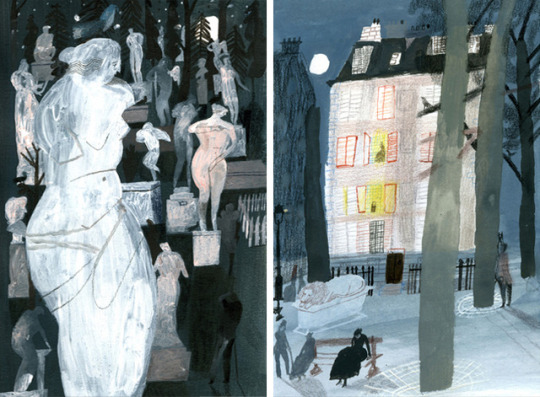
Then I analyzed illustrations of Laura Carlin and Betsy Walton. I examined how these artists work with the color, how they use different materials in one picture and how the work with multilayered composition.
1 note
·
View note
Photo

Then I analyzed illustrations of Laura Carlin and Betsy Walton. I examined how these artists work with the color, how they use different materials in one picture and how the work with multilayered composition.
1 note
·
View note
Photo
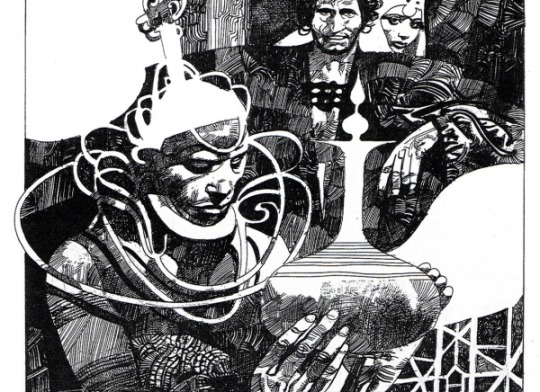
I looked at Sergio Toppi’s illustration and analyzed how the artist works with the balance of black and white shapes; how the patterns affect human body shapes; how he plays with the scale of the personages.
0 notes
Link
As one of the primary research resources I will use photos of Brazilian photojournalist Sebastiao Salgado. He creates a unique atmosphere within each photo. They are full of different details. Thus the daily habits and appearance of African and Indonesian tribes can be easily researched through his works.
0 notes
Photo

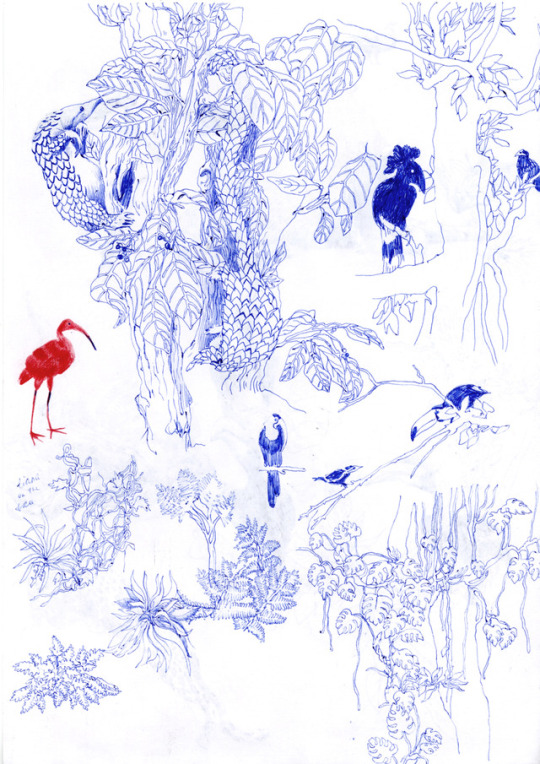
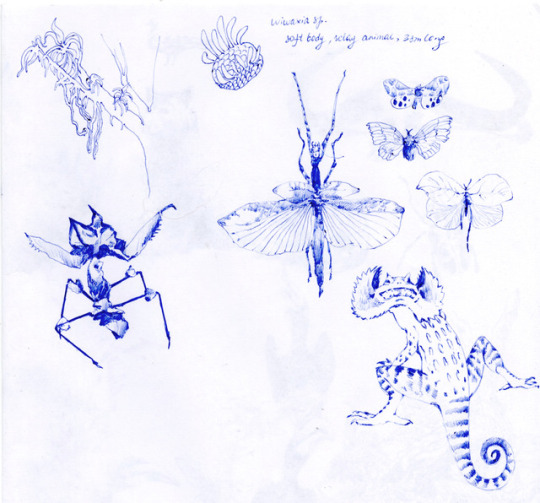
Sketches from Zoological Museum of Moscow University.
1 note
·
View note
Link
0 notes
Link
In my illustration I would like to concentrate on the characters’ daily activities, life routine. I need to think about simple habits, emotions and movements of personages to make them engaging and ‘real’.
Hayao Miyazaki’s works is a good example of how the humanity of the drawn characters influence the overall perception of the picture.
0 notes
Photo

Narrative.
As the main plot of my work I would like to take the story of the old Thailand legend. According to this myth in early years people and spirits lived together in harmony. Then spirits got the habitat of stealing eggs from villagers while people started to kidnap spirit’s cucumbers. That was a problematic conflict and the neighbors decided to live separately. Spirits moved into the jungle and human stayed in villages. Sacred gates were built on the borders of those settlements.
This basic story will be supported with a number of little parallel stories and scenes that I will create among different characters.
I wouldn’t write a scenario for those, but will develop them visually.
Children book’s illustrator Mattias De Leeuw (our PPL guest from the previous semester) uses this approach in creating his stories. Mattias experiments with accidents while developing a story. He claims that sometimes ideas came with brushstrokes. He draws with dry paint and sometimes the texture or the movement of the brushstroke suggests interesting ideas in scenes or character’s shapes.
0 notes
Link
British photographer Jimmy Nelson captures tribal beauty. It is inspiring to see such a unique way of the body decoration that Karo people from Africa use. This decoration was made not only to attract women, but to enhance the status. Young boys paint their body and faces with white chalk for a ceremony. An important ceremony in a young man's life is the bull-leaping ceremony to qualify for marriage.
0 notes
Text
A Home in the World: Houses and Cultures by Martine Laffon and Caroline Laffon (2004)

There are the most interesting extracts from this book:
- In north America the location of the villages reflects the position of stars in the sky.
- The idea that nature and human kind form one body is found in the design of traditional villages, which merge with the landscape.
- The traditional villages of Mali (Africa) derive from a human form. The chief’s hut represents the head, notables’ and princes’ huts signify the shoulders, and according to the social hierarchy, different families’ huts form the sides of the body and the legs. In the belly of the village, where the central courtyard is located, servile classes live where slaves lived in the past. Ritual rites are performed on the central square.
- The initiate villagers bury talismans for protection from enemies, wildcats, and evil spirits at the village’s entrance, center, and exit.
- Dwelling within the square - a symbol of stability and fixedness - lends itself to a sedentary lifestyle, while setting up within a circle - a symbol of movement - is appropriate for nomadic cultures.
- For the Luluas of Congo, the west is the place of evil spirits. On the other hand, the east, the heavenly place of the ‘‘village of sweet bananas’’ is the abode of positive forces.
- The Akha people of Thailand prefer to clearly set the boundaries of the human kingdom and the spirit kingdom in order to avoid any problems. The main gate protects from illnesses, wild cats, leprosy, vampires and anything that is a threat to the village. Small wooden statues, often of a man and a woman, are placed at the foot of the gate; they clearly indicate the place where the human kingdom begins. The Akhas feel vulnerable when they are in the jungle - the spirit kingdom. Therefore, they pass through the village gate when they return as if through a decontamination screen.
- In Myanmar village on Inle Lake the inhabitants create small floating gardens that are planted on a base of woven reeds, covered with silt. So when the lake quadruples its surface are during the rainy season, villagers would have vegetables and condiments at their fingertips.
- The Masai in Kenya set up their camp in a circle, which they surround with a thorny hedge to protect themselves from predators. In the center they place their riches: the sheep and oxen, which are also their purpose for living. According to a Masai proverb, ‘a man without a herd is not a man’.
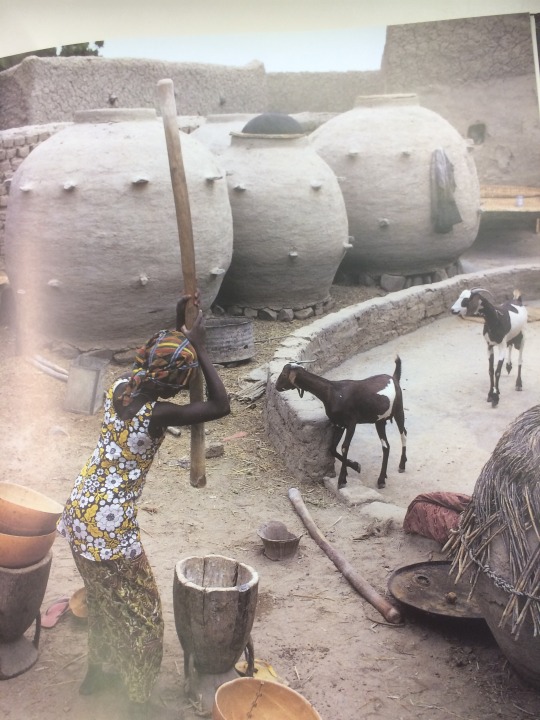
- The huts of Pygmies look like they are made out of plant tiles. The cone roofs of these often bamboo, often covered with Marantaceae leaves. Pygmy woman sew leaves together to make the hut’s covering.
- The first person who traced the plan of a house on the ground around him - or herself drew a tiny border between the inside and outside, the domestic and the wild space, between the human being and the spirits or ancestors. Activities carried out in the interior and exterior are not the same.
- Each house is personified. Sacred spec for some, profane for others, the house cannot ignore the imprint of the human body, of the things the body needs: to breath, nourish itself, sleep, have sex. The importance of these basic needs determine the way of life.
- If privacy is protected, immediately the shape and orientation of the windows change. Different lifestyles influence the shape of the habitat.
- The roof or dome represents the skull and the opening left for the passage of smoke also allows spirits, gods and shamans to pass.
- In Africa people sleep on a small headrest sculptured from wood. In reality, the head must not be in contact with the earth because it contains everyone’s thoughts and identities. For the Bambara of Mali, men grow from their heads like a plant, by the ‘‘bud of the head’’. The head must be taken care of to remain prosperous and in good health.
- Pygmy people’s campsites have certain requirements: large trees to protect against rain, and a slightly open clearing. They have to be close to a creek of water, and near a large hunting territory. Pygmies fear forest danger and fear the elephant possessed by spirits. People count on the power of fire to keep it away, and all evil spirits along with it. The fire is never extinguished. The constant heat and smoke also allow hunting nets and baskets to be dried, hung on one of the pegs of the roof. The smoke protects food from flies.
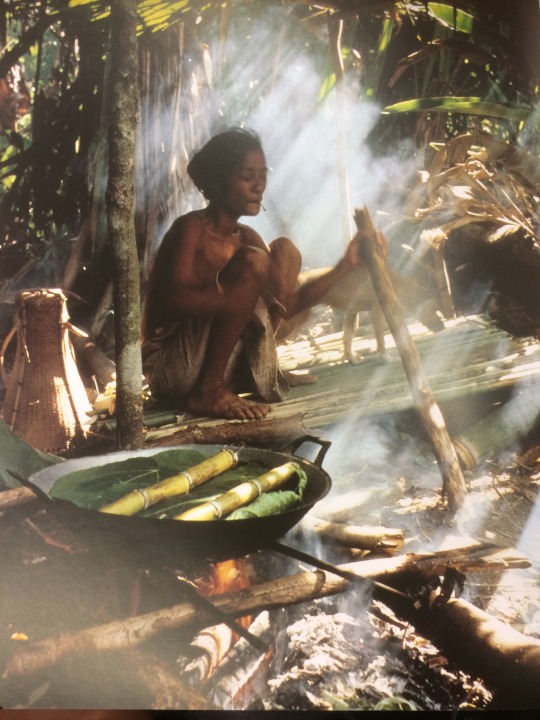
- In southern Tunisia the first part of the the storeroom should be bright, in the image of the family’s wealth. The second, darker part contains the jars, fitted into niches, where the food supplies are stored: olive oil, dates, lentils, dried fish, and semolina or wheat flour. The jars must number seven per row - the number of fertility and prosperity.
- In China some walls protecting a group of houses were defined to the point that the heads of freshly slaughtered enemies were buried at their feet as an offering to invigorate them.
- The Korowais (New Guinea) are building their houses in the treetops. That offers them protection from the humid and dense jungle. The right tree must be chosen: a banana tree, the solidest of all. After the trunk is pruned, scaffolding is set up to install the floor (made of interwoven branches covered with palm bark). The walls are erected using stalks of the sago palm, and the roof is made using its leaves. A long pole serves as a staircase.
- Long ago in China, it was thought that evil spirits wandered through houses. The only recourse was to invite guardians that were just as powerful. To accomplish this, glazed ceramics or figurines with animal forms were placed at each end of the roof. Naturally, the more important and powerful the person to be protected, the greater the number and size of the beasts. Always found in odd numbers, these figurines sometimes looked like a real procession: fish, lion, phoenix, horse, etc.
- Mirrors were placed above doors, roofs and bedrooms to detect evil influences and chase them away.
- Ceramic owls were used to keep away storms at the time of the solstice, which were actually a lightning rod in China.
0 notes
Text
FMP Proposal
Area of study.
The work will be about ‘‘the second skin’’. In different cultures people identified ‘‘the second skin’’ as a shelter or protector. For instance, the sky protects the earth from any cosmic interventions, home protects people from the wild animals and bad weather, masks and talismans protect hearts from an evil eye. What is more tribal masks not only defend human kind but help to communicate with forest spirits.
I would like to base the narrative of my work on the old myth. According to this myth in early years people and spirits lived together in harmony. Then spirits got the habitat of stealing eggs from vil- lagers while people started to kidnap spirit’s cucumbers. That was a problematic conflict and the neighbors decided to live separately. Spirits moved into the jungle and human stayed in villages. Sacred gates were built on the borders of those settlements to identify boundaries of village terri- tories.
My areas of study will be the following: tribes and cultures, architecture and sculpture, rituals and dances, peoples/villagers’ daily activities, nature, animals and insects, interactive/game illustration.
FMP Title.
The working title for now ‘‘the village of sweet bananas’’ (from the book ‘‘Home in the world: Houses and Cultures’’ by M. & C. Laffon). It is a heavenly place in African culture.
Research.
I am planning to explore and collect information and visuals in the areas that were mentioned pre- viously (nature, animals and insects, tribes and cultures, architecture and sculpture, rituals and dances, peoples/villagers’ daily activities).
Primary research:
Zoological Museum of Moscow University, The State Museum of Oriental Art, BHSAD library, Stu- dynet, Google books, Pinterest, BBC films, live drawing and sketching people, my travel photo- graphs and early made sketches.
Secondary research:
I will investigate atmosphere, mood, character design, stylistic decisions, composition and rhythm, schemes and level of interaction in art works of such photographers and artists as Sebastiao Sal- gado, Jimmy Nelson, Sergio Toppi, Moebius, Katie Scott, Laura Carlin, Rose Blake, Betsy Walton, Martin Handford (Where’s Wally?), Chris Ware, Richard McGuire, Christophe Bataillon, François Ayroles.
Type of work.
I am planning to make a big interactive game illustration (print, not digital) where the viewers will be encouraged to find several characters/or to follow those characters and discover something.
Additionally, there will be an installation (AOM Project) with ceramic figures to support the main picture and identify the leading characters.
Materials, processes and outcomes.
I intend to draw the main illustration using mixed media. Maybe it would be graphite and colour pencils, pens, oil pastel, acrylic paint. The final outcome will be scanned, refined digitally and print- ed on a good quality paper(or bind as a table game).
The installation will be made from several little ceramic sculptures.
I am going to use school library and computer rooms to research my topic, illustration base room to develop ideas and draw final art work, ceramic workshop to create main personages.
Some stages and processes will be developed at home. Also I will attend few ceramic workshops in studio ‘Terracotta Ceramics’.
Progress measurement and assessment.
Tutorials with tutors and peers will help to determine the level of success of the work and its further development. Also my personal expectations from the project and written evaluations will help me to review the progress of the work critically. I will document the process by making notes and sketches on separate papers. Then collect and summarize it in the project log and blog. I prefer to work with the research that is made on separate papers because it is more comfortable to have all the material in front of you rather that leaf through sketchbook pages. Project planner and time table will be essential part of the proper time management.
Schedule.
Week 1 (30.01-5.02)
Primary research FMP, write brief/research AOM, HTD- print the Dog;
Week 2 (6.02-12.02)
Primary research FMP, FMP proposal confirmed, HTD-print/crit, AOM briefing, life drawing session;
Week 3 (13.02-19.02)
Secondary research FMP, character/scene/settings development FMP, AOM;
Week 4 (20.02-26.02)
Primary/Secondary research FMP, character/scene/settings development FMP, trying different techniques - start to draw FMP, summarize/reflect on AOM;
Week 5 (27.02-5.03)
Self Promo briefing, developing/drawing FMP, HTD - print/crit, life drawing session;
Week 6 (6.03-12.03)
developing/drawing FMP, HTD - print/crit, prepare AOM presentation;
Week 7 (13.03-19.03)
developing/drawing FMP, HTD - print/crit, AOM presentation, life drawing session;
Week 8 (20.03-26.03)
developing/drawing FMP, assessment preparation;
Week 9 (27.03-2.04)
developing/drawing FMP, Summative assessment, portfolio/promotion tutorials, HTD - print/crit;
Week 10 (3.04-9.04)
drawing/refining FMP, binding design development FMP, Self Promotion tutorials, HTD - print/crit;
Week 11 (10.04-16.04)
binding design development/print/bind FMP, Self Promotion tutorials, HTD - print/crit;
Week 12 (17.04-23.04)
FMP Crit, Project Log FMP, HTD - print/crit;
Week 13 (24.04-30.04)
Project Log FMP;
Week 14 (1.05-7.05)
BHSAD closed, Project Log FMP(print/bind);
Week 15 (8.05-10.05)
Project Log FMP(bind), FMP Deadline, Exhibition construction.
0 notes